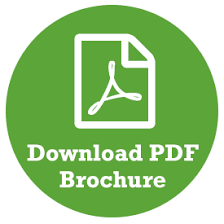
E. Marusakova
Centraleuropean Biotech Institute, Slovakia
Title: MRSA in Slovakia in patients suffering by chronic autoimmune disease
Biography
Biography: E. Marusakova
Abstract
Background: Slovakia is a member of European Antimicrobial Resistance Surveillance Network (EARSN) since 2013. In all reported areas, Slovakia ranks between 25-50% of the countries with the highest proportion of antibiotic resistant samples tested. Specifically, MRSA has since 2013 slightly increasing trend. One of the most prominent problem in Slovakia is MRSA in patients with chronic autoimmune disease. Specifically, highly problematic is nosocomial infection of the skin and soft tissue (SSTNI). SSTNI is characterised by erythema and inflammation. Patients with chronic autoimmune diseases are more sensitive to this tzpe of infection. Antimicrobial resistence menas in these patients long term infection with, very often, poor prognosis and decreased quality of life. There were no data about co-infection in these patients. Our intention was to review all available data, analyse and synthesize them, and then add current cross-sectional data from the largest diagnostic sites.
Objective: The aim was to identify the most common agents of SSTNI and to link analysed data to the reported MRSA data.
Methods: Selection of the data from the national epidemiological information system was performed. The selection was made from data on nosocomial infections with the localization on the skin, event. mucosa, wounds and burns, infection of the surgical wound. Time period was from 1997 -2018. Within these data, ICD-10 diagnoses have been filtered (L08, L89, T81.3, T81.4).
In these data recognition of pathogen was performed. These data were analysed from the perspective of time development and a descriptive statistical analysis was performed.
MRSA data from Slovakia reported to EARSN were selected and analysed. These data were linked to SSTNI.
Results: Increasing exponential trend on SSTNI was identified, from 503 cases in 1997 to 1338 cases in 2018
5 most frequent pathogen were identified: Staphylococcus aureus (39.47%; CI 95% ± 7.07%), E. coli unspecified (9.88%; CI 95% ± 1.70%), Pseudomonas aeruginosa (7.85 %%; CI 95% ± 0.92%), Klebsiella pneumoniae (5.26%; CI 95% ± 1.70%), Proteus mirabilis (4.07%; CI 95% ± 0.53%). No data on resistance were present at the national epidemiological system that were SSTNI. MRSA is present in 26,74 % (CI 95%, ± 0.92%) of Staph. aureus isolates. No information neither on HA-MRSA nor on CA-MRSA was identified in any of existed database.
Conclusion: Linking data on Stap. aureus SSTNI with MRSA data, MSSA seems to be the most frequent pathogen of SSTNI. MRSA seems to be second the most frequent pathogen in SSTNI. Increasing trend on SSTNI was not observed in MRSA ratio in SSTNI caused by Stap. aureus.
Based on analysed data basic research and development on innovative locally applied plaster with bacteriophages will be realized.

